Navigating the world of healthcare can sometimes feel overwhelming, especially when things don't go as planned. Whether it's a billing issue, a service concern, or a misunderstanding with your treatment, knowing how to effectively voice your complaints is crucial for resolution. In our latest article, we'll explore a comprehensive letter template specifically designed for medical complaint resolution, helping you advocate for your rights and ensure your voice is heard. Stay tuned to learn how to craft a compelling message that paves the way for positive change in your healthcare experience!
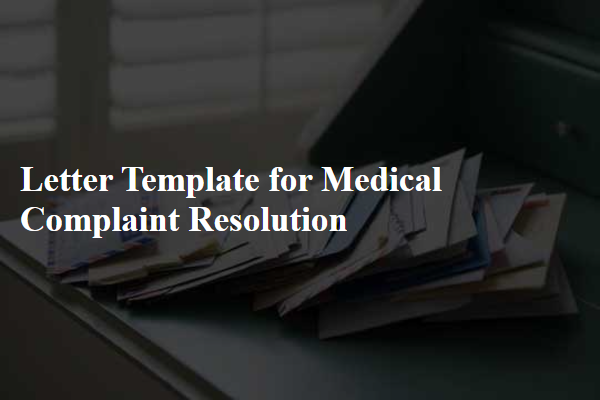
Clear and concise introduction
A medical complaint resolution process requires a well-structured approach to ensure clarity and effectiveness. Patients often face issues involving healthcare quality, treatment errors, or inadequate communication, necessitating a direct and respectful introduction in correspondence. Utilizing details such as specific incidents, location of treatment (e.g., St. Joseph's Hospital, City), and relevant dates (e.g., August 15, 2023) establishes context. Highlighting the need for resolution while maintaining a tone of professionalism encourages a prompt and thoughtful response from medical staff or administration. Clear articulation of concerns facilitates identification of resolutions, ultimately enhancing patient safety and care quality.
Detailed description of the issue
A recent experience at City Hospital, specifically during my visit on March 5, 2023, raised significant concerns regarding patient care and medical protocol adherence. Upon arrival, I noticed an unusually long wait time of over two hours despite having an appointment scheduled for 10 AM. During this period, I observed several patients expressing frustration due to similar delays. When finally seen by Dr. Smith, the primary care physician, I felt rushed through the consultation, lasting only approximately five minutes. Critical health concerns discussed, including persistent chest pain, were not thoroughly addressed, and my request for diagnostic tests was dismissed without sufficient explanation. Additionally, follow-up instructions were vague and lacked necessary detail, potentially compromising my health management. This experience raises questions about the quality of care provided at a facility highly regarded in the community.
Resolution request and desired outcome
Medical complaints often require careful articulation to ensure a clear understanding of the issues faced by patients. A formal resolution request should outline specific incidents of concern, such as appointment delays or misdiagnosis. Ideally, it should include dates, times, and the names of medical staff involved, providing a comprehensive account of the events. A desired outcome could involve apologies, corrective measures for future incidents, or compensation for any distress caused. Additionally, referencing relevant medical policies or patient rights could strengthen the request, emphasizing the importance of accountability in patient care standards.
Relevant supporting documentation
Medical complaint resolution often requires relevant supporting documentation, such as medical records, bills, and treatment summaries. These documents provide critical evidence to substantiate claims of inadequate care or mistreatment. For instance, a patient's health records could reveal treatment inconsistencies that may have led to adverse outcomes, while billing statements can highlight unexpected charges linked to previously agreed-upon services. Additionally, referral letters from specialists might demonstrate the necessity for further investigation into the complaint, reinforcing the case for resolution. Clear, organized documentation strengthens the argument and aids in the timely processing of the complaint.
Polite and professional tone
The issue of medication errors in hospitals can lead to severe consequences for patients, particularly in cases of overdose or incorrect prescriptions. A 2019 study revealed that over 1.5 million Americans are affected by medication errors annually, with hospitals like NYU Langone Health and Cleveland Clinic among the institutions striving to reduce these incidents. The implementation of digital prescription systems has shown promise, with a reported 37% decrease in medication errors at hospitals adopting this technology. Moreover, consistent staff training and the establishment of a medication reconciliation process can significantly improve patient safety, ensuring that the correct medications are administered at the right dosages. These measures are crucial in fostering a safer environment for patients, ultimately enhancing the quality of healthcare services.
Letter Template For Medical Complaint Resolution Samples
Letter template of medical complaint for unsatisfactory treatment resolution
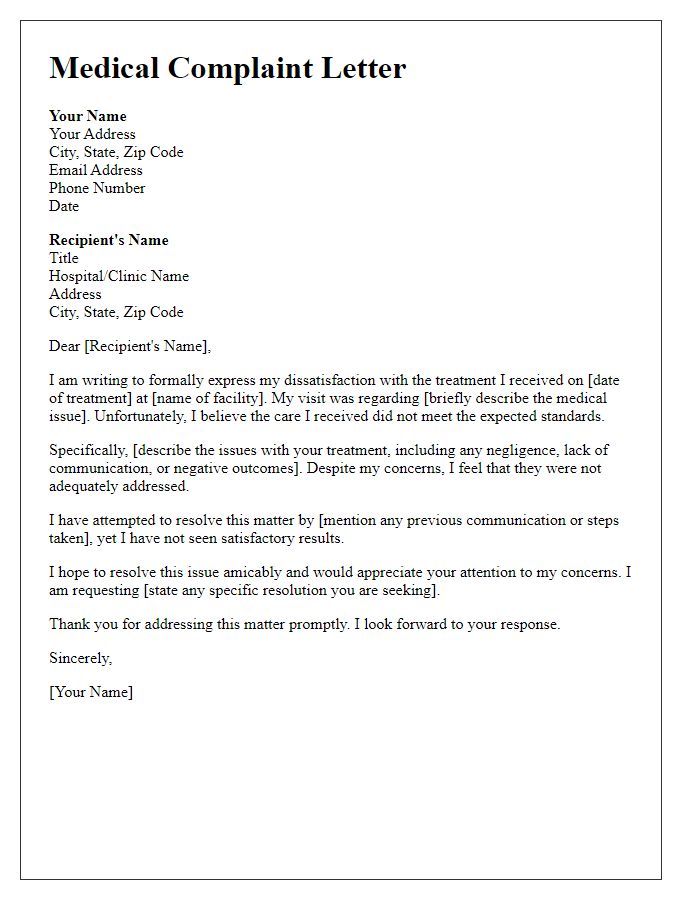
Letter template of medical complaint concerning surgical errors resolution
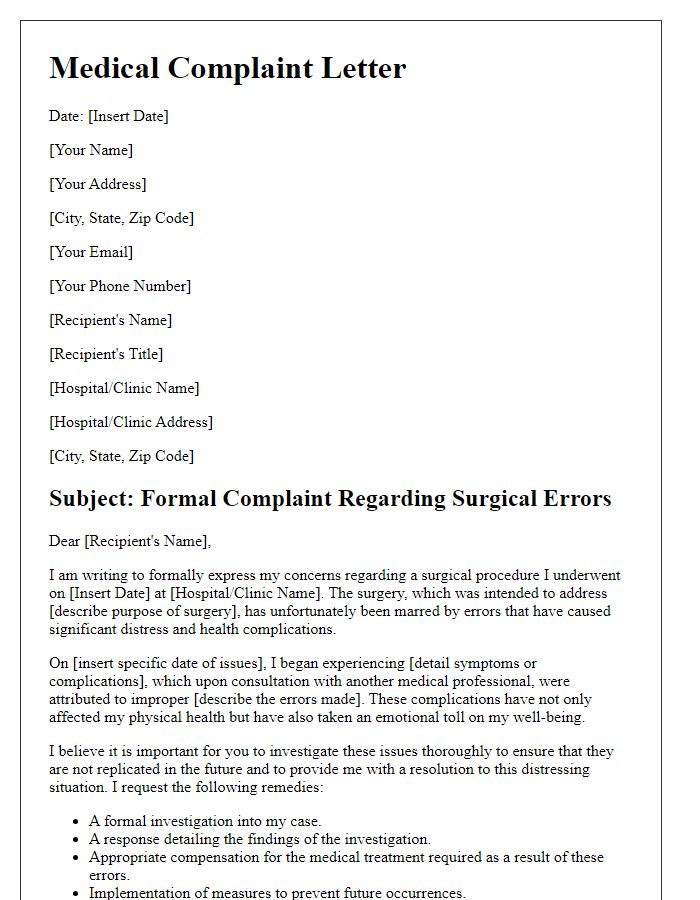
Letter template of medical complaint about denied insurance claims resolution
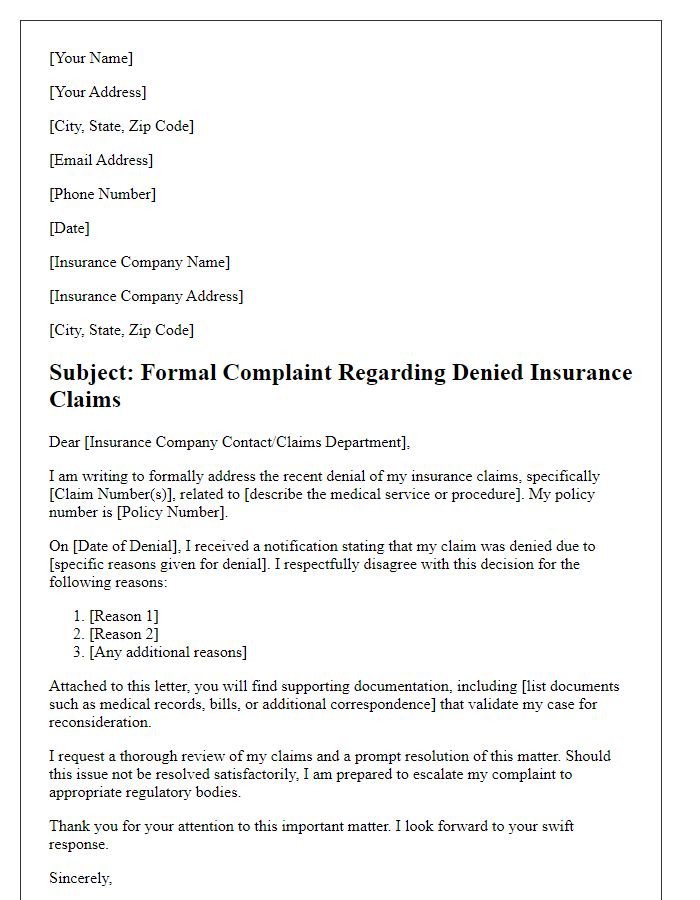
Letter template of medical complaint addressing equipment malfunction resolution
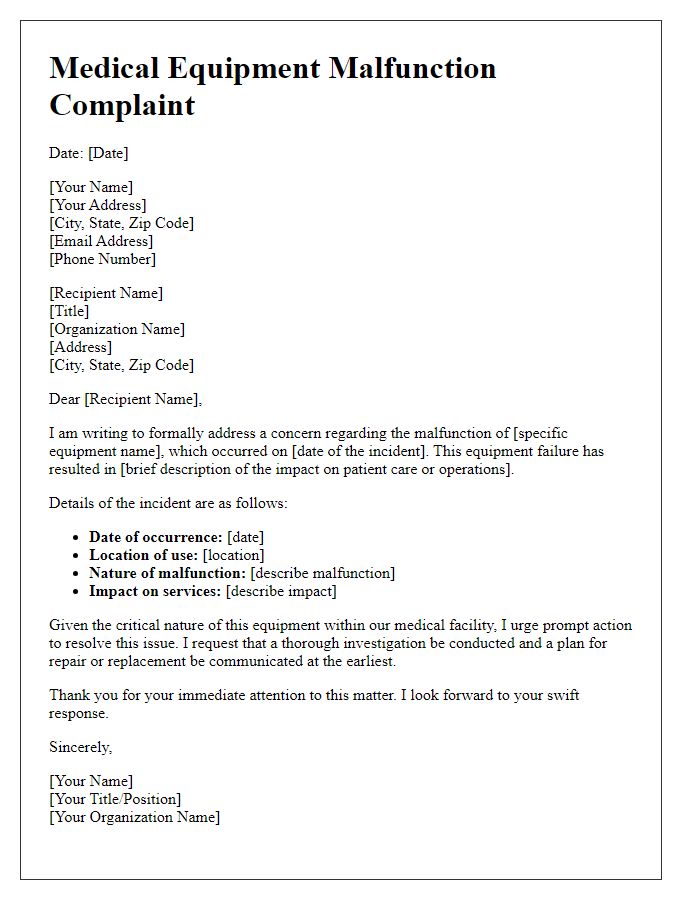
Letter template of medical complaint regarding delayed treatment resolution
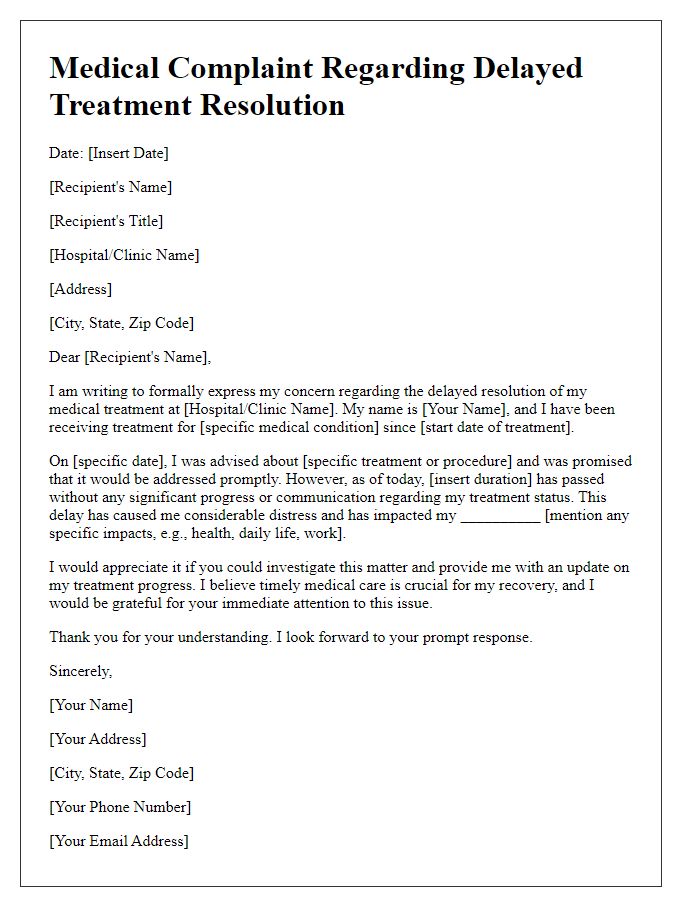

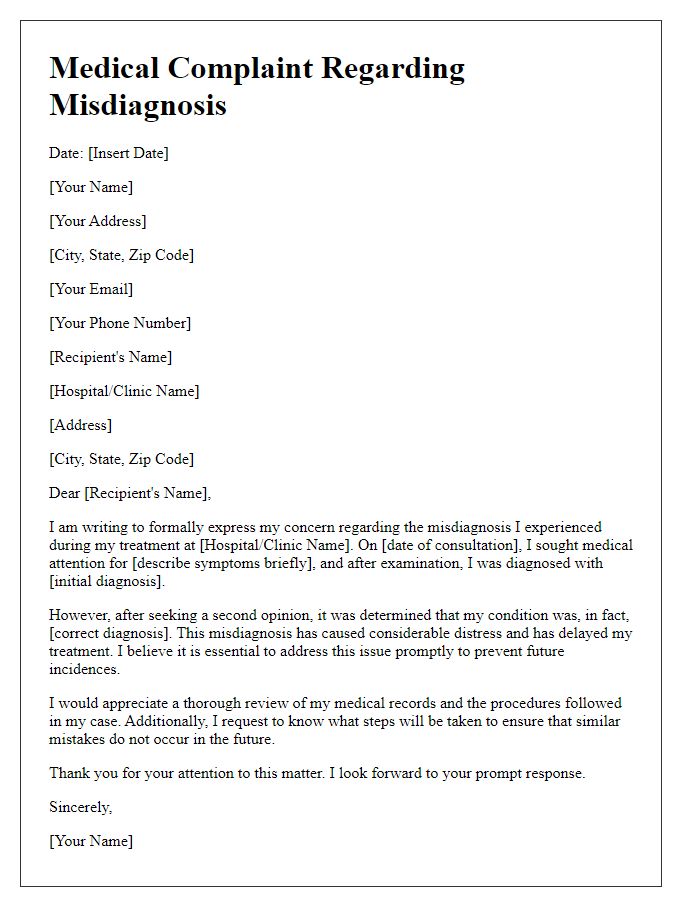
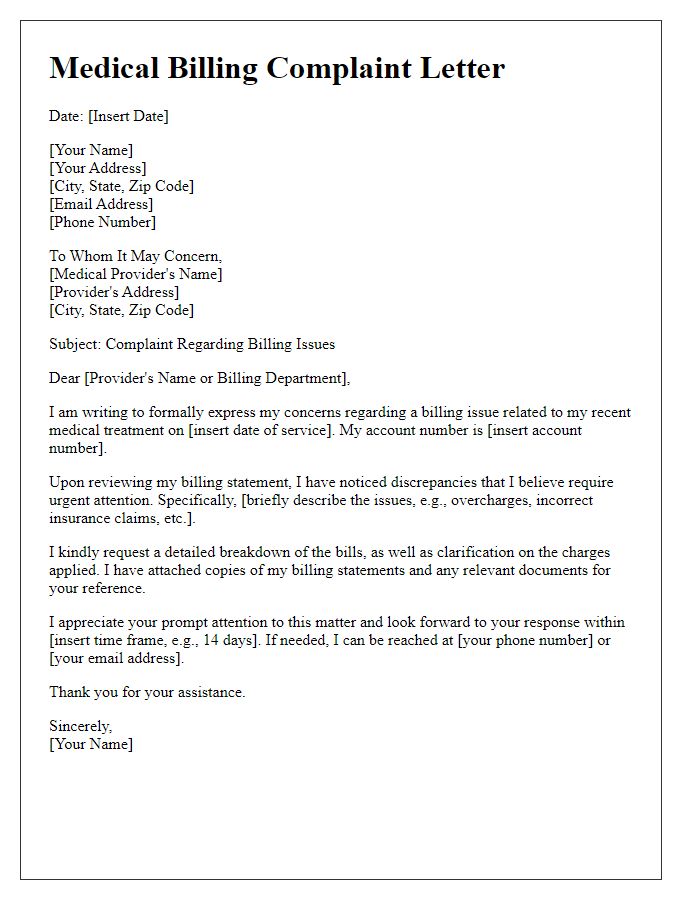
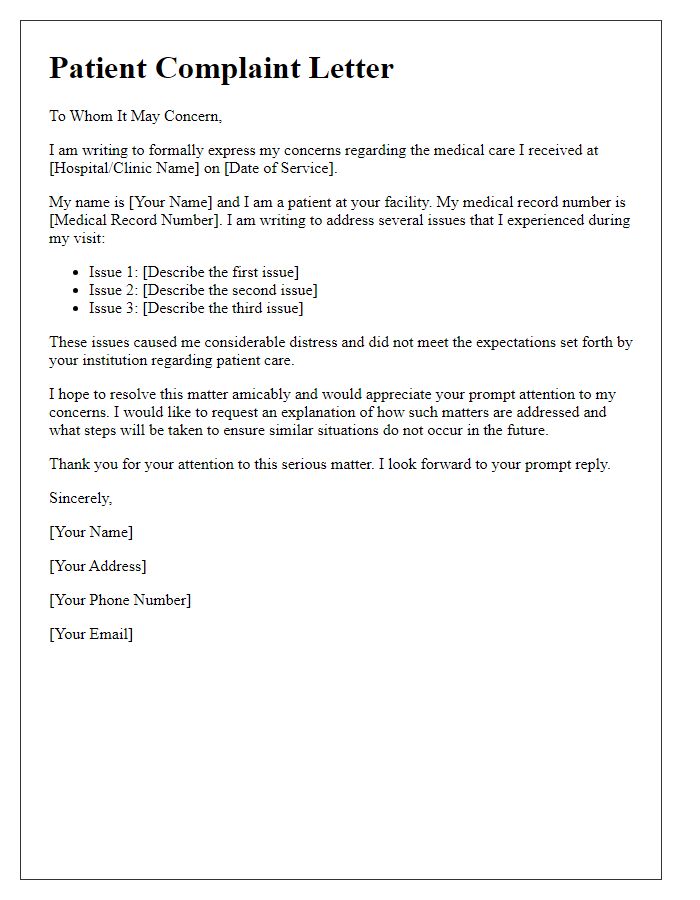
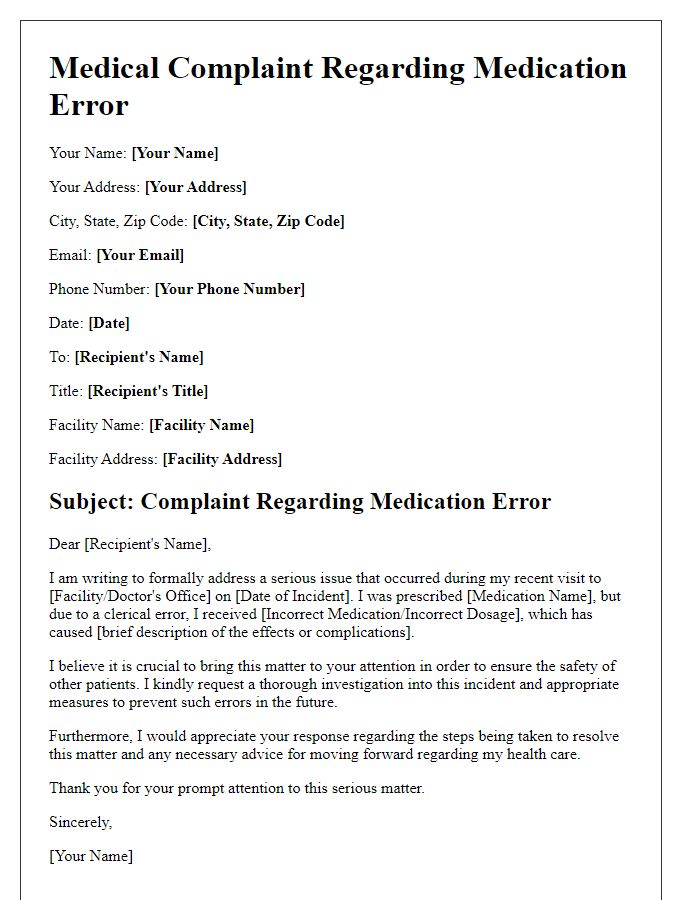
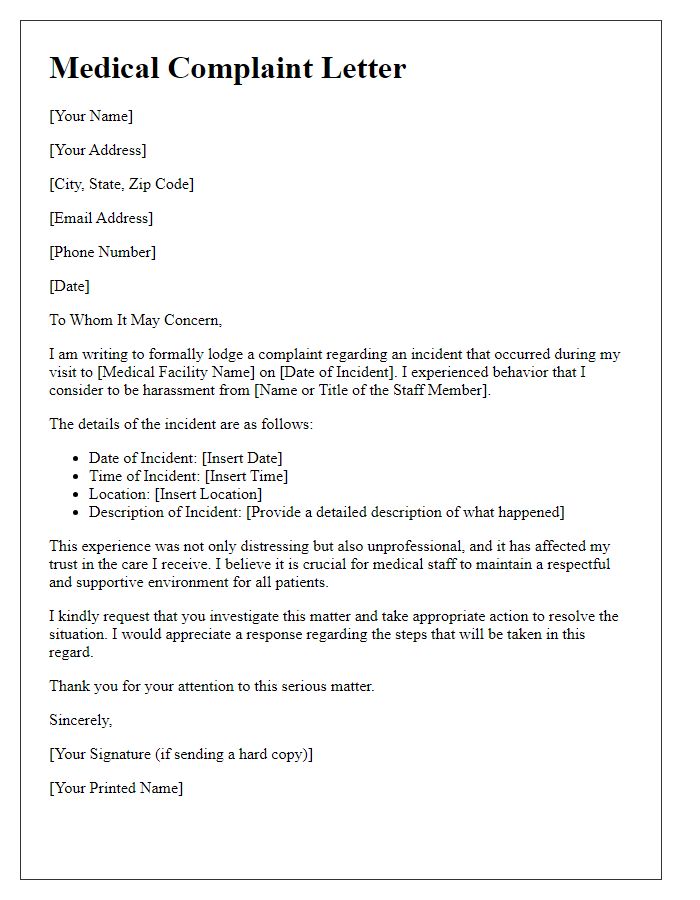


Comments